He went to the war front and painted war scenes. Homer did the cooking and the washing while he was staying with the soldiers.

Prisoners From the Front (detail)
Enlarge
Enlarge
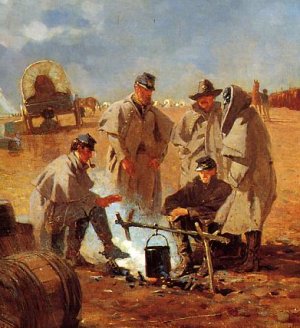
A Rainy Day in Camp (detail)
Enlarge
Enlarge
In Home Sweet Home we see the soldiers in the camp. The band in the background is supposedly playing the song "Home Sweet Home". The soldiers are wearing brown boots which they were supposed to polish black, but they were usually too busy.
After the war he went to Paris and studied for a few months. His greatest talent was in using watercolors. He became one of the best watercolorists ever.
He spent time on the coast of England and also in the state of Maine. Many of his paintings such as the featured painting in this lesson Sailing the Catboat reflect the knowledge he gained of the sea and life on the coast.
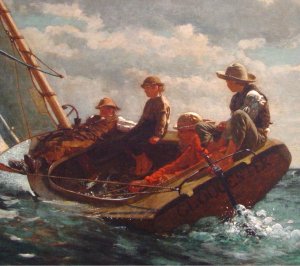
Breezing Up, A Fair Wind (detail)
Enlarge
Enlarge
Compare Sailing the Catboat and Breezing Up. They are very similar. How are they alike and how are they different?
The man in the painting The Gulf Stream is in a perilous situation. What are the dangers he is facing? Is there a chance for his rescue?
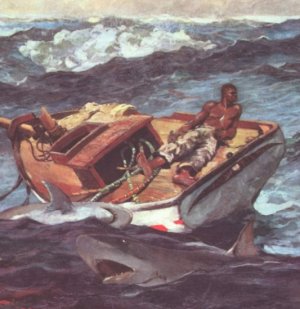
The Gulf Stream (detail)
Enlarge
Enlarge
Summer Night by contrast is a tranquil scene. In his earlier seascapes he put people in the picture. Later he painted scenes that featured only the land and sea.
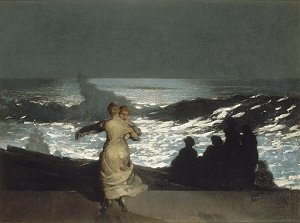
Summer Night
Enlarge
Enlarge
He enjoyed painting pictures of children. In his painting Snap the Whip, he shows what life was like in 1872. In this painting, the children are taking a break from their classes in the "little red schoolhouse". The green of the hills and grass make up the largest portion of the painting. Notice how the red color of the schoolhouse stands out, and how your eye is drawn to the white shirts on three of the boys. None of the boys are wearing shoes.
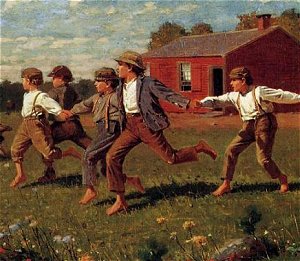
Snap the Whip (detail)
Enlarge
Enlarge
Homer would do studies in pencil before he painted a picture. Sometimes he worked with oil paints and sometimes with watercolor. His watercolor pictures provided a very good income for him. Homer liked to be by himself and he never married. For the last 27 years of his life he lived in a remote part of Maine away from people.
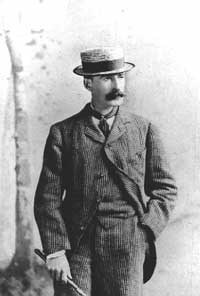
This biography was written by Patsy Stevens, a retired teacher.
References:
Gerlings, Charlotte. 100 Great Artists, New York: Gramercy Books, 2006.
Order
Wilder, Jesse Bryant. Art History for Dummies. Hoboken, NJ: Wiley Publishing Inc, 2007.
Order

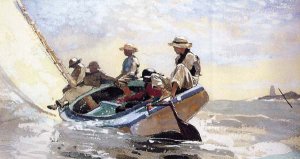
 A frequent question:
A frequent question: